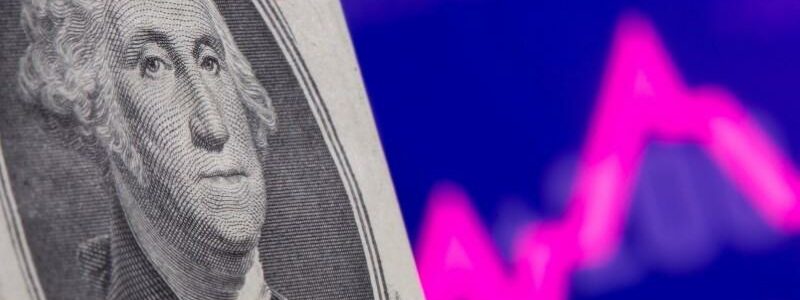
Dollar hits two-month high as Fed eyes earlier rate hikes; kiwi climbs
TOKYO (Reuters) – The dollar rose to its highest level in almost two months versus major peers on Thursday after the Federal Reserve unexpectedly brought forward its projections for interest rate hikes into 2023.
The dollar index, which tracks the currency against six rivals, rose to as high as 91.484 in Asia for the first time since April 19, following a nearly 1% surge overnight, the biggest gain since March of last year.
Only New Zealand’s kiwi made any meaningful headway against the dollar among major currencies on Thursday, climbing 0.6% after data showed New Zealand’s economy grew much faster than expected in the first quarter. The kiwi had tumbled more than 1% on Wednesday.
The Federal Reserve on Wednesday began closing the door on its pandemic-driven monetary policy as officials projected an accelerated timetable for interest rate increases, opened talks on how to end crisis-era bond-buying, and said the 15-month-old health emergency was no longer a core constraint on U.S. commerce.
A majority of 11 Fed officials pencilled in at least two quarter-point interest rate increases for 2023, even as they pledged in their statement to keep policy supportive for now to encourage an labour market recovery.
The projections also showed higher forecasts for inflation this year, though the price increases were still described as “transitory.” Overall economic growth is expected to hit 7%.
“The Fed’s super hawkish pivot should reinforce the lows and offer further near-term USD support,” TD Securities analysts wrote in a research note.
“A double-whammy of higher rates and wobbly risk sentiment would result in a positioning squeeze and the start of a new narrative,” possibly resulting in a 2% dollar rally through the summer, the note said.
The benchmark 10-year Treasury yield was at 1.5890% in Asia, after rallying to as high as 1.5940% from as low as 1.4820% on Wednesday.
The dollar climbed to an almost two-month high of $1.1984 per euro on Thursday, extending its gain of about 1% from the previous session.
It strengthened to as high as 110.825 yen, a level not seen since April 1, adding to a 0.6% rally overnight.
The Australian dollar dipped to $0.75975, the lowest since April 13, before trading 0.3% higher to recoup some of Wednesday’s 1% tumble.
Sterling slipped to the lowest since May 7 at $1.39745, and the Canadian dollar hit the weakest since May 5 at C$1.2292, before trading little changed in the Asian afternoon.
“The USD is in a much healthier place now that the Fed is inching toward the exits,” Westpac analysts wrote in a client note, predicting the dollar index would test 92 in coming days.
“The Fed’s pivot will likely make for a challenging backdrop for risky assets, and there’s enhanced prospects for more interest rate support for the USD, all of which spells good news for the currency.”
Cryptocurrencies were also hurt by the dollar’s strength, with bitcoin hovering around $39,000 following a 4.5% slide on Wednesday, and ether at $2,438 after a 7% selloff.
========================================================
Currency bid prices at 0432 GMT
Description RIC Last U.S. Close Pct Change YTD Pct High Bid Low Bid
Previous Change
Session
Euro/Dollar
$1.1994 $1.1995 +0.00% -1.83% +1.2005 +1.1984
Dollar/Yen
110.6900 110.6400 +0.05% +7.17% +110.8200 +110.6200
Euro/Yen
132.77 132.79 -0.02% +4.61% +132.8700 +132.7000
Dollar/Swiss
0.9086 0.9084 +0.02% +2.70% +0.9091 +0.9076
Sterling/Dollar
1.3993 1.3985 +0.07% +2.43% +1.4002 +1.3975
Dollar/Canadian
1.2274 1.2278 -0.02% -3.60% +1.2291 +1.2265
Aussie/Dollar
0.7627 0.7609 +0.25% -0.84% +0.7644 +0.7598
NZ
Dollar/Dollar 0.7086 0.7049 +0.55% -1.30% +0.7101 +0.7049
All spots
Tokyo spots
Europe spots
Volatilities
Tokyo Forex market info from BOJ
Source: Read Full Article